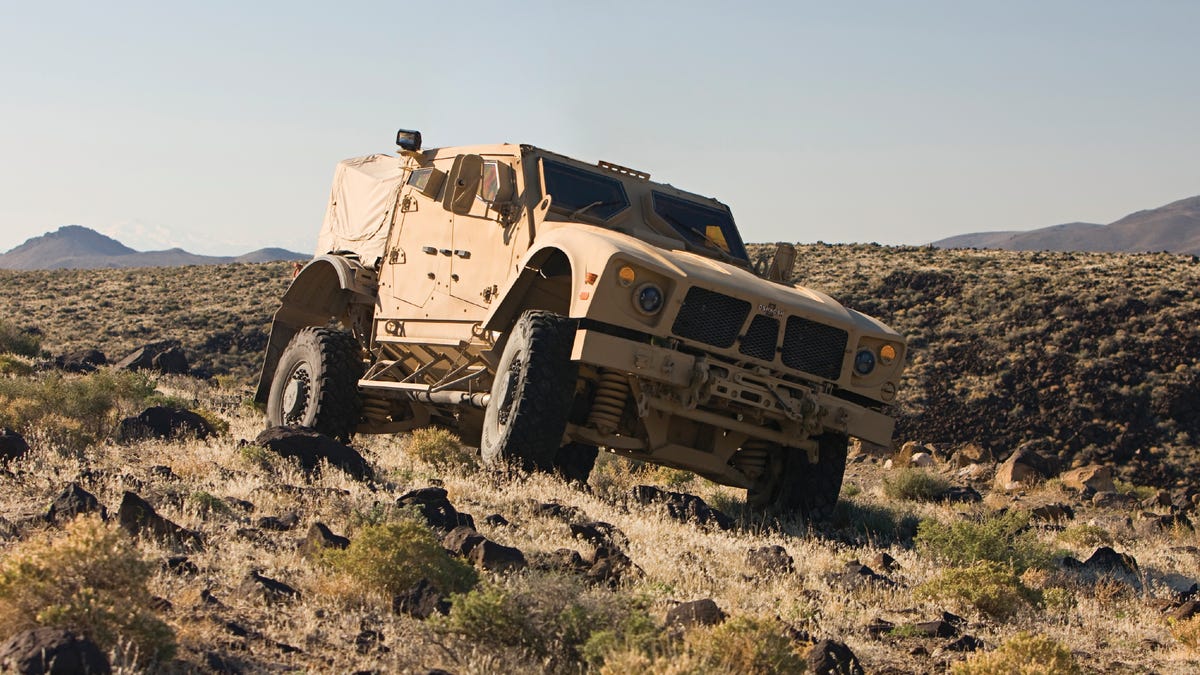Pentagon ships new M-ATVs to Afghanistan
Over the next year, more than 6,600 of the Oshkosh-built mine-resistant vehicles will head to Afghanistan to replace up-armored Humvees.

U.S. troops in Afghanistan are now starting to receive the first of thousands of a new vehicle intended for treacherous mountain roads and tight urban lanes.
The Defense Department said Wednesday that it had loaded seven M-ATVs (for "mine-resistant, ambush-protected all-terrain vehicles") onto a pair of aircraft for deployment to Afghanistan. Over the course of the next year, the military expects to field more than 6,600 of the vehicles (Click for a PDF of the M-ATV's brochure).
The M-ATV fits into a middle ground between up-armored Humvees, which it will be replacing in Afghanistan, and the hulking MRAP mine-resistant vehicles that the Pentagon has been sending in large numbers to Iraq over the last couple of years. While MRAPs have proved effective in protecting passengers against improvised explosive devices, they are often too large and too heavy for the roadways soldiers often need to patrol. And they're not exactly designed for off-roading.
Mine-resistant vehicles are characterized in part by their intrinsic armoring and by a V-shaped hull that helps to deflect the force of explosions at ground level. Humvees, meanwhile, weren't originally designed with IEDs in mind and have had to use add-on armor to gain some measure of protection.
The Oshkosh M-ATV weighs in at about 11 tons, which is only half as heavy as the average MRAP, and 5 tons lighter than the lightest MRAP. (Humvees are in the range of 5 tons apiece.) It can carry four passengers plus a gunner, and can handle a payload of 4,000 pounds.
The new vehicle is powered by a 370-horsepower Caterpillar C7 engine, with an Allison 3500 SP transmission. It's built on Oshkosh's TAK-4 independent suspension system, which the company says has been used already on more than 10,000 Medium Tactical Vehicle Replacements (MTVRs) supplied to the Marines and Seabees.
In the field, the M-ATV is expected to support small-unit combat operations in challenging rural, mountainous, and urban environments.
Through the end of the year, when transport by sea is scheduled to begin, the U.S. Air Force expects to airlift between 300 and 500 M-ATVs per month from Charleston Air Force Base in South Carolina. The 437th Aerial Port Squadron there has already dispatched more than 3,700 MRAPs overseas.
Oshkosh received its initial delivery order from the Pentagon at the end of June. The deal was valued at $1.05 billion for 2,244 of the M-ATVs.
Update, 1:18 p.m. PDT: Oshkosh said Thursday that to date it has received orders valued at $2.3 billion for 4,296 M-ATVs, including spare parts and support services.

